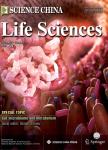Computational model for perception of objects and motions
Computational model for perception of objects and motions作者机构:Department of Computer Science and Engineering Shanghai Jiao Tong University Shanghai China Department of Electronic Engineering Shanghai Maritime University Shanghai China
出 版 物:《Science China(Life Sciences)》 (中国科学(生命科学英文版))
年 卷 期:2008年第51卷第6期
页 面:526-536页
核心收录:
学科分类:0710[理学-生物学] 0820[工学-石油与天然气工程] 0830[工学-环境科学与工程(可授工学、理学、农学学位)] 0808[工学-电气工程] 07[理学] 0817[工学-化学工程与技术] 0807[工学-动力工程及工程热物理] 0827[工学-核科学与技术] 0703[理学-化学] 0701[理学-数学] 0812[工学-计算机科学与技术(可授工学、理学学位)] 071003[理学-生理学]
基 金:the National Basic Research Program of China (Grant No. 2005CB724301) National High-Tech Research Program of China (Grant No. 2006AA01Z125)
主 题:visual perception visual cortex computational model receptive fields simple cells complex cells
摘 要:Perception of objects and motions in the visual scene is one of the basic problems in the visual system. There exist What and Where pathways in the superior visual cortex, starting from the simple cells in the primary visual cortex. The former is able to perceive objects such as forms, color, and texture, and the latter perceives where , for example, velocity and direction of spatial movement of objects. This paper explores brain-like computational architectures of visual information processing. We propose a visual perceptual model and computational mechanism for training the perceptual model. The compu- tational model is a three-layer network. The first layer is the input layer which is used to receive the stimuli from natural environments. The second layer is designed for representing the internal neural information. The connections between the first layer and the second layer, called the receptive fields of neurons, are self-adaptively learned based on principle of sparse neural representation. To this end, we introduce Kullback-Leibler divergence as the measure of independence between neural responses and derive the learning algorithm based on minimizing the cost function. The proposed algorithm is applied to train the basis functions, namely receptive fields, which are localized, oriented, and bandpassed. The resultant receptive fields of neurons in the second layer have the characteristics resembling that of simple cells in the primary visual cortex. Based on these basis functions, we further construct the third layer for perception of what and where in the superior visual cortex. The proposed model is able to perceive objects and their motions with a high accuracy and strong robustness against additive noise. Computer simulation results in the final section show the feasibility of the proposed perceptual model and high efficiency of the learning algorithm.



